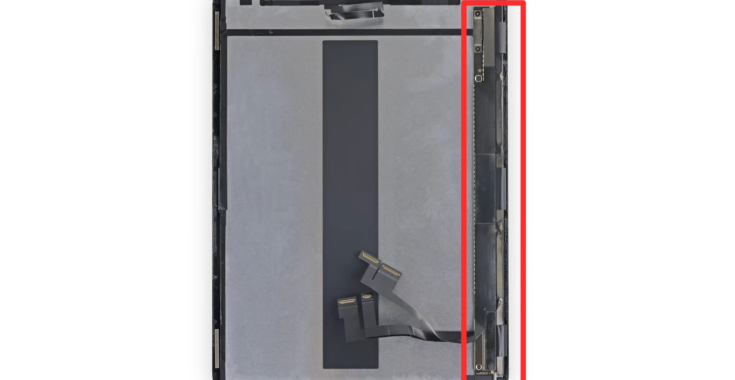iFixit’s 2021 iPad mini teardown.
A new teardown of Apple’s latest iPad mini by iFixit found a clue that may explain the “jelly scrolling” effect that some of the tablet’s users have complained about.
In case you missed our past coverage on the subject, some iPad mini users noticed a subtle, stagger-like disconnect between the right and left sides of the screen when scrolling through content. Some people see it right away, others have to have it pointed out to them, and others still don’t notice even when told.
After we wrote about it, Apple commented on the story to us saying that the effect is expected. From our coverage:
In response to our inquiry, Apple has told us that the “jelly scroll” issue on the 6th-generation iPad mini is normal behavior for LCD screens. Because these screens do refresh line by line, there is a tiny delay between when the lines at the top of the screen and lines at the bottom are refreshed. This can cause uneven scrolling issues like the ones observed on the iPad.
When tearing the mini down, iFixit found that the controller board that drives the tablet’s display is oriented vertically. By contrast, the iPad Air’s is oriented horizontally. iFixit suggests that the jelly scrolling effect occurs when the tablet’s orientation doesn’t match the placement of the controller board, because the line-by-line refresh also happens relative to that board’s orientation.
Sure enough, slow-motion footage of the iPad mini shows the jelly scrolling in portrait mode (a vertical orientation) but not in landscape (a horizontal one). And the iPad Air also exhibits jelly scrolling in the same test; it just does so in the horizontal orientation instead of the portrait one.
The iPad Pro has a vertically oriented display controller board. While another video test showed that the jelly scrolling was still happening on that tablet in portrait mode just like the mini, the Pro’s 120Hz refresh rate all but masks it to most human eyes. All that is to say that while the effect may be more noticeable on one device than another, it is common in any OLED or LCD display, iPad or otherwise.
Recent online controversy about the iPad mini’s jelly scrolling aside, iFixit’s teardowns are usually focused on exploring how easily repairable devices are. The iPad mini received a 3 out of 10 for repairability. Earlier this week, iFixit also tore down the iPhone 13 Pro and gave it a 6 out of 10.
Listing image by iFixit



